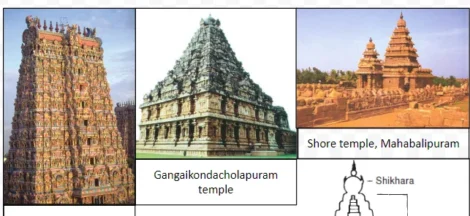
By Arun Srivastava
The tragedy of farmers and peasants has become so grave during the Modi government that even the Rashtriya Swayamsevak Sangh has to finally raise the issue with the BJP leadership. At a recent meeting of senior RSS leaders, attended by BJP president Amit Shah, it virtually pulled up the leadership and expressed apprehensions that the issues of economic distress and unemployment in the farm sector could damage the electoral prospect of the party in the 2019 general election.
For some time the Sangh has been upset with the functioning of the prime minister and had also asked him to amend his style of functioning and redraw his priorities. It is disappointed with the outcome of the Gujarat polls, which the BJP nearly lost. The feedback from its frontal groups made the RSS assert its authority. Sangh nurses the feeling that the situation could have been avoided in Gujarat had Modi taken care of the plight of the farmers. It feels that he could not handle the patidar issue properly.
The RSS feels the party had to suffer due to the anger in the rural areas over the farm distress and restlessness among unemployed youth. At least for the past one year Sangh has been highlighting the difficulties in the farm sector. The Bharatiya Mazdoor Sangh and Swadeshi Jagran Manch on a number of occasions had asked Modi not to push anti-farmers and anti-labour policies. They held that faulty economic policies were responsible for the plight of the farmers and youth.
The Sangh’s frontal bodies also complain that while Modi has not been responsive to the need for pro-people and pro-farmers policies, his government adopted a proactive stance when it came to big business houses and industrialists. The Modi government abandoned the idea of amending the Land Acquisition, Rehabilitation and Resettlement Act in 2015, but the BJP-ruled states changed the law to make land acquisition easier for industrialists. The BJP always ignored the voice of the kisan unions.
The UPA government had salvaged the economic situation of the poorest peasants to a great extent by introducing the National Rural Employment Guarantee Act (NREGA). But Narendra Modi abhorred the idea and described funds allotted to the scheme as a “living monument of UPA’s failure”. The allocation for the fund was slashed. It was only in the 2017 Union Budget that some raise was provided.
The BJP has never been soft towards the kisans or peasants, as it did not treat this class as its support base or vote bank. It has been close to big landlords and money lenders, who have antagonistic relations with the labourers and poor peasants. This was primarily the reason for the Modi government’s dislike for NREGA, which is essentially meant for poor farmers. The farmers had to suffer two years of drought, during which agricultural growth stagnated: It was only 1.2 per cent in 2015-2016. The growth rate did increase to 4.1 per cent in 2016-2017, but by then the rural economy had been badly affected by demonetization. Peasants desperate for cash had to sell their produce at very low prices.
Post-demonetization, they had to borrow huge amounts from moneylenders at exorbitant interest rates; many were forced to sell their land. Though as a political rhetoric Modi in his public speeches highlighted support to farmers, he did not take any initiative to mitigate their problems. Whatever he did for them was purely an exercise to keep them away from the Congress.
During the Lok Sabha elections in 2014, Modi had promised to provide them with minimum support price (MSP), but once in power, he conveniently forgot the promise. The farm sector would not have faced this alarming situation had the Modi government kept its promise. The violent protest by farmers in Madhya Pradesh’s Mandsaur district is testimony to the fact that the state government did not care to protect the floor price of pulses. MP farmers leader Shiv Kumar Sharma, who left the RSS-affiliated BKS, blamed the BJP’s policies for the farmers’ discontent. When the farm loan waiver was announced, some of the leaders objected on the ground that the money was being misused. But these people maintained silence when industrialists looted the banks of lakhs of crores.
The tragedy of Indian agriculture has been the inability of the farmers to break out of the clutches of traders and middlemen. In most cases, the prices offered in the mandis are much lower to their investment. There is an urgent need for agriculture marketing reforms. On November 20 a massive rally of the farmers was organized in Delhi by the All India Kisan Sabha. Only 27 per cent of the peasantry gets institutional credit, with the rest dependent on money lenders, traders, contractors and middlemen for their credit needs. Around 82.50 per cent of families in the farming community are below the poverty line.
An insight into the agricultural crisis would make it clear that it is the gift of the IMF and World Bank. According to the World Bank’s lending report, India has easily been the largest recipient of its loans in the history of the institution, and these conditions form part of the broader World Bank-backed development plan for India.
There is no denying the fact that India’s farmers are held hostage to neoliberal capitalism. Facilitated by the WTO and the US-India Knowledge Initiative on Agriculture, there is a deliberate strategy to make agriculture financially non-viable for the small farms to impose the World Bank sanctioned model of agriculture.
The number of jobs created in India between 2005 and 2010 was 2.7 million (the years of high GDP growth). Data released by the Labour Bureau shows that in 2015, jobless ‘growth’ had finally arrived in India. Agricultural distress has become a permanent feature. The non-availability of remunerative prices to farmers on agricultural produce continues to be a vexed issue. (IPA Service)
The post RSS apprehends farm crisis affecting rural economy appeared first on Newspack by India Press Agency.



